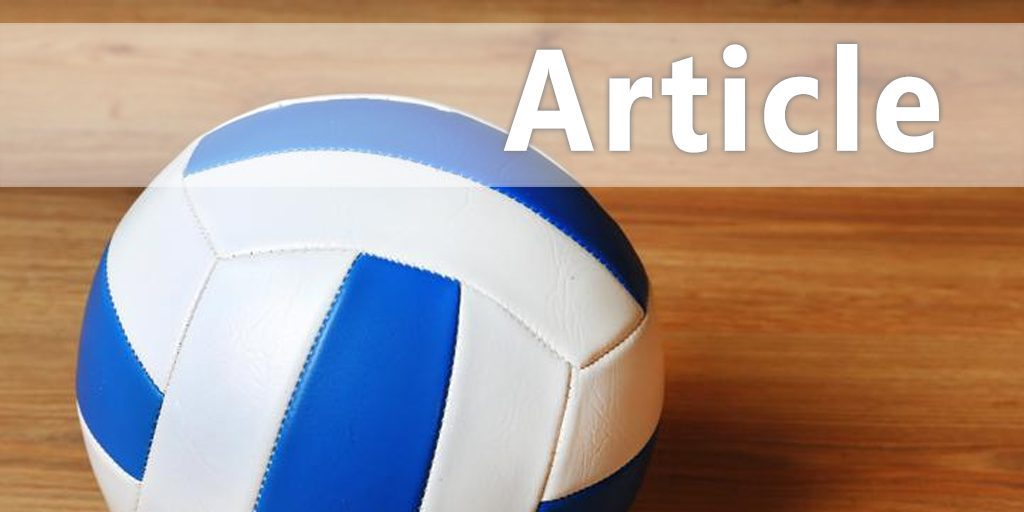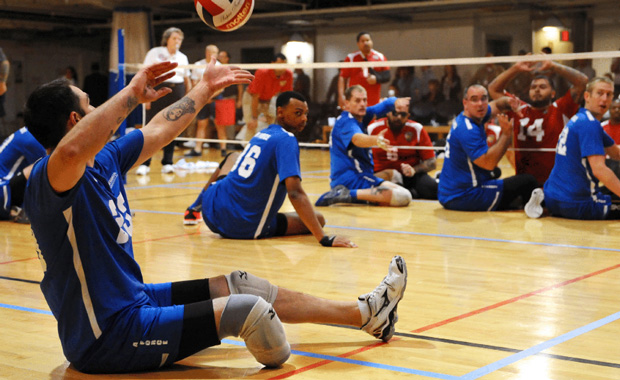| TAKE A SEAT - Cross Training Using Sitting Volleyball |
| By: Bill Hamiter and Cara Long
Originally Published in: Coaching Volleyball Copyright and Provided by: AVCA Even incorporating elements of the sitting game into warm-up routines can make a notable difference. By isolating particular elements of the game, the player focuses on specific movements that they'll need throughout the match. For example, let's look at blocking. Distance away from the net, penetration and anticipation all contribute to an effective block, and because the ball speed is so quick in the sitting game, the defender must get into the best position possible in order prevent a lack of control. Take a look at how this drill breaks blocking down into the most essential movements, forcing the player to focus on hand placement and penetration.
Likewise, the sitting game inherently offers an approach that necessitates incidental contact between players. Typically, court players will be hyper-aware of the players around them on the court and seeing glimpses of their teammates in their peripheral vision can lead to hesitancy and distraction. The act of following the ball in the sitting game will get them accustomed to contact and cause them to be more spatially aware. Just as in blocking, the sitting game forces the setter to be more deliberate about their arm positioning and accuracy. If the arms are poorly aligned, they can't simply move their feet to compensate. Isolating the movement creates an ideal situation for observation and feedback. Serving is another aspect of the game that the sitting approach offers instant feedback on. Each player typically begins their serve with the toss - which, when using your feet, isn't as important when the footwork can be used to correct for poor tossing. Isolating the toss, however, can force the player to focus on their ideal toss height and position. Sitting also forces the timing to be dialed in - have the player focus on not rotating too early or late. Not rotating until the right arm begins to swing keeps maximum rotational force intact.  The sitting game isolates movements and affords the coach an opportunity to observe specific elements of the game without extraneous movements and distractions. For more examples and possible drills to incorporate into your practice routines, check out "Cross Training Using Sitting Volleyball" featuring Bill Hamiter and Cara Long. |








